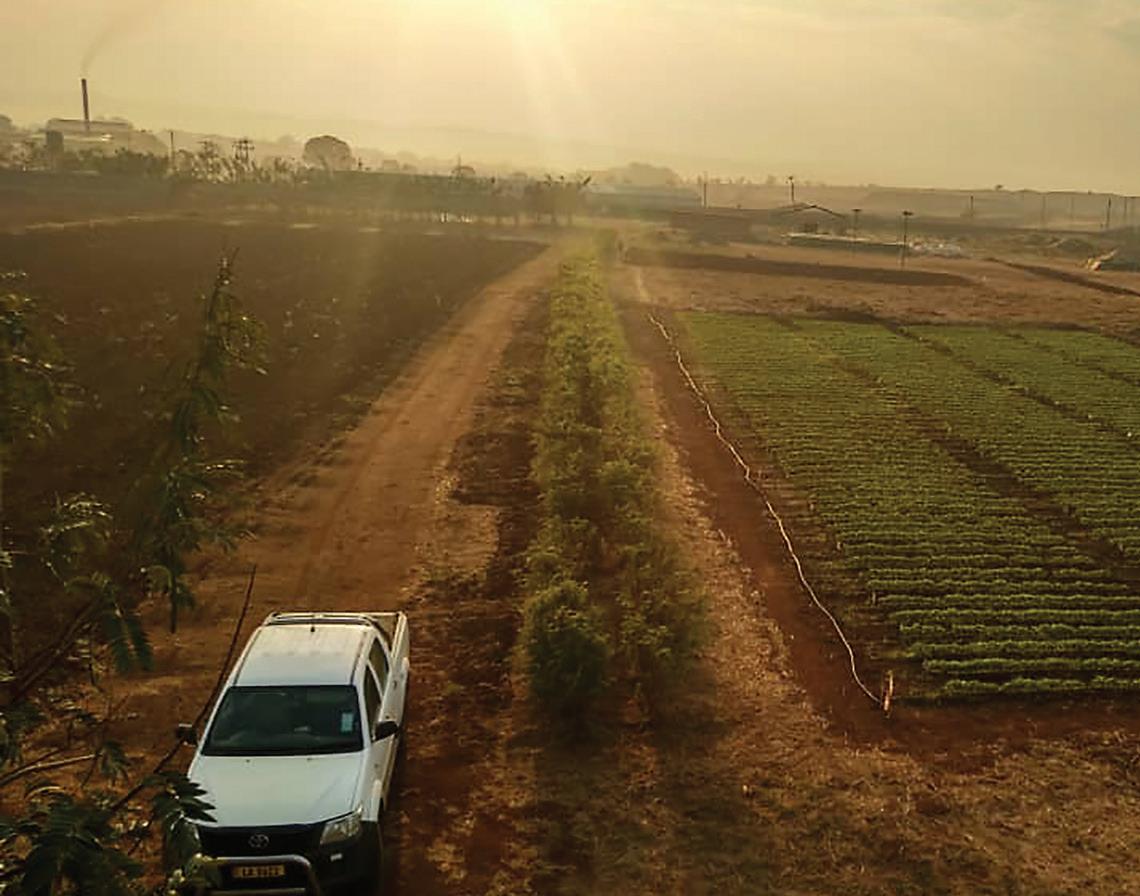
4 minute read
SMART Farms Generate Custom Input Bundles to Maximize Farmer Profits
CHALLENGE: The path to high yielding soybean in SubSaharan Africa (SSA) is not simple or straightforward. Soybean as a commercial crop is new for African farmers, researchers, and agribusinesses. As a result, agronomic practices are not well understood, guidance is mixed, and best management practices do not consider different farmer budgets. For example, what is the first investment a farmer should make given a $50 budget? That is, what achieves the greatest return for the least investment? Without this guidance, soybean yields and profitability remain low, and farmers do not sustain adoption..
“Using the SMART Farm approach, we can end hunger in our lifetime by providing farmers with access to high performing seed, the best agronomic practices, and the most effective inputs.”
Advertisement
Andrew Goodman, Director of Farm Operations Horizon Farming Limited, Malawi
“We implemented a SMART Farm because we saw input bundling as a way to offer a practical, scalable solution to smallholders who are our main suppliers of raw materials. In practice, the trials provided value even beyond this, leading us to question commonly held assumptions about soy agronomy in Uganda and helping chart new paths towards improving farm yields.” SOLUTION: To address the challenges of low yield, low profitability, and dis-adoption, SIL leverages Liebig’s Law, the Law of the Minimum, that advises farmers on the first step they should take to ensure the best return on their investment. This stepwise approach identifies the minimum input costs that generate the maximum financial return, allowing initial success to feed into additional future inputs. SIL SMART (Soybean Management with Appropriate Research and Technology) Farms generate unique, stepwise bundle recommendations for growers that translate to high returns on their input costs and profitable soybean production. Beginning with a red bundle that includes certified seed and good agronomic practices, then stepping up to the yellow bundle that adds inoculum, and finally to the blue bundle and green bundle that adds phosphorous fertilizer and lime, respectively. With SIL’s help, growers identify the bundle that works best for their budgets, environment, soil and growing conditions.

“The SMART Farm journey has been a great starting point in using applied soybean production research to support the livelihoods of our contracted growers. Soybean is a new crop for us, and the SMART Farms provide a strong evidence-based foundation to maximize the productivity of our growers while tackling the economic, financing, technical, and long-term sustainability questions we had surrounding small scale grower soybean production in Malawi.”
Lars Gruner, Agronomy Director Japan Tobacco International (JTI), Malawi Site-specific SMART Farm Industry Extension Reports are generated for operators after every season.
The SMART Farm replaces anecdotal guidance with regular, formal, and scientifically produced guidance for growers in Africa and for the industry, while simultaneously engaging in deep capacity and institution building with its incountry partners. SMART Farms also serve as hubs for private sector collaboration related to seed quality, soil improvement, and nodulation, as well as offering transparent and reliable testing for agricultural products, innovations and technologies for the industry. Current publicprivate partnerships include trialing Calciprill, a low-bulk liming product, for Omya and trialing herbicide and inoculum products for BASF.
SMART Farm site operated by private sector partner Japan Tobacco International (JTI) in Malawi.

SMART FARM NETWORK EFFECTS SIL supports a network of SMART Farm operators including processors, seed companies, nucleus farmers, and national agricultural research stations to identify the unique bundle of inputs most appropriate for their growing conditions and budgets. This network spans: • 6 countries • 25 trialing sites • 13 private sector partners • 5 public sector partners SIL provides the SMART Farm network with tailored, agronomic Industry Extension Reports and technical manuals specific to their growing environment and local conditions. Network members include both private sector partners like • Good Nature Agro (GNA) in Zambia • Mozambique Leaf Tobacco (MLT) in
Mozambique • Horizon Farming Limited in Malawi • Cottfield Group in Uganda • Japan Tobacco International (JTI) in Malawi And public sector partners like: • International Institute of Tropical
Agriculture (IITA) Southern Africa Hub in
Zambia • Savanna Agricultural Research Institute (SARI) in Ghana • Ethiopian Institute for Agricultural Research (EIAR) in Ethiopia

TREATMENT YIELDS AND GROSS MARGINS
SMART Farms generate unique bundle recommendations for growers to maximize profits. Operators receive a gross margin analysis to understand which bundle is best suited for their growing conditions and budgets. KEY IMPACTS SIL’s SMART Farm trials across Africa generate local, unique bundle recommendations for growers that consider their local input costs and grain prices. For example, an operator in Malawi found that adding inoculum in addition to certified seed and good management practices (Yellow Bundle) yielded the most profit. Their Yellow Bundle raised yields from 800 kg/ hectare to 3,300 kg/hectare and increased gross margins from $182/hectare to $1,090/ hectare, resulting in an 18x return on their inoculum input costs.

Red Bundle
Best Management Practices Certified Seed 9x return on input costs compared to farmer practice
Marginal Ratio: 3.2*
Yellow Bundle
Best Management Practices Certified Seed Inoculum 18x return on additional input costs compared to Red Bundle Marginal Ratio: 1.4**
Blue Bundle
Best Management Practices Certified Seed Potassium Inoculum 5x return on additional input costs compared to Red Bundle Marginal Ratio: 1.5**

